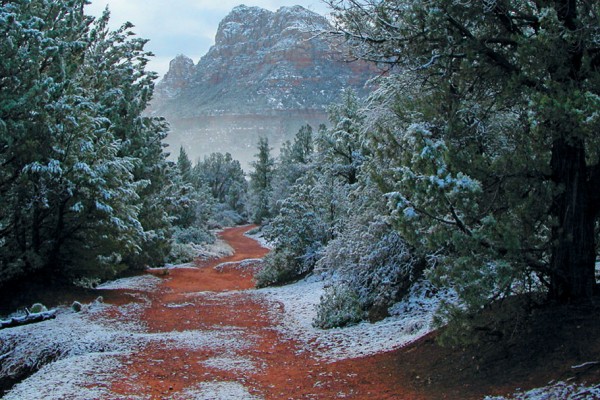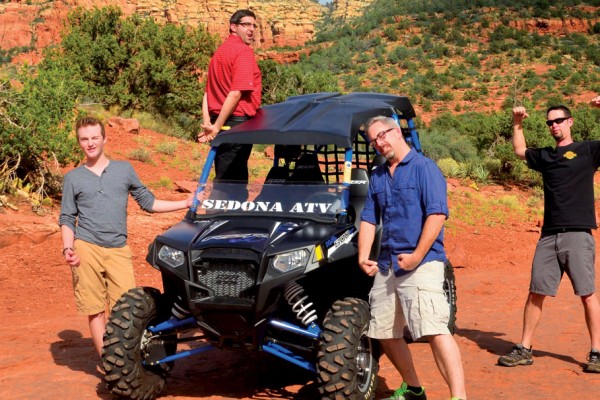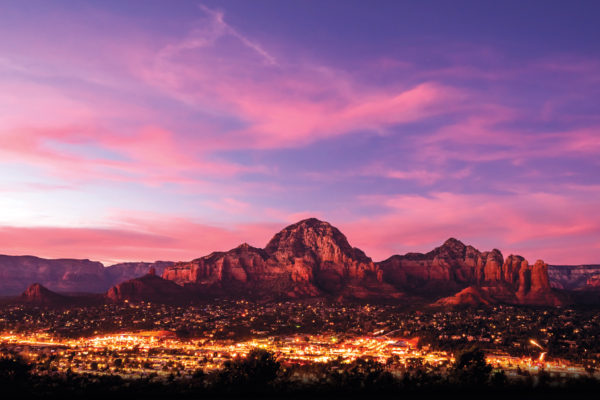Continued (page 3 of 3)
You’ve since worked with Emmylou Harris and Tucson-based Calexico. Are you a musician?
No, I don’t play anything. I’m totally a lameass [laughs]. There’s nothing in the world that moves us as quick emotionally as music. A book can move you, but it takes four years to read it. A poem can move you but not everybody. Music is instantaneous. It’s across the board. You can have a raging war going on, but if you like the music and I like the music, we might have something to talk about. Music is the ultimate communicator of the soul.
What was the impetus for ‘Boom, Bust, Boom’?
My wife was pregnant with our second daughter, and I got sick. They were starting to test the soil in Bisbee, and I had this epiphany that I lived in southern Arizona near all these copper mines, and I didn’t know anything about copper or the business or the state. I later found out I had arsenic poisoning. I was working in our garden and eating food from the garden. Now the current owners of the mine don’t have anything to do with this. This is all a product of the smelters belching out heavy metals hundreds of years ago. But just because you don’t see it doesn’t mean they aren’t still there. And as soon as I started to peel back and learn a little bit, I was more fascinated with this topic than anything else I had done before from an intellectual aspect.
Arizona is nicknamed the Copper State, and it’s the largest copper producer in the U.S. Given your book’s subject matter, how do you reconcile raising your family here?
Well, I left Bisbee. We went to Flagstaff, and you aren’t going to find pollution from copper mining up there. The pollution is essentially transmitted through water. It’s impossible to stop the leaching of heavy metals. We don’t have the technology to eliminate copper. These guys work really hard to try to contain it, but ultimately it’s going to go down into our aquifers. But I feel fine here. I’m not as worried about it because I have this blind thing that I feel this system we have called towns are monitoring things to make sure they are safe for human consumption. If we don’t have that, we’re all screwed no matter where we live. But if you’re living near a copper mine, whether it’s open or closed, it’s a whole different thing.
What brought you to Flagstaff and Sedona?
We were worried about our kids. My wife was interested in going to grad school and we didn’t want to leave Arizona. NAU addressed her particular field – she’s an archaeologist. She got her master’s in two years. The day she turned in her thesis, she heard about the job at Verde Valley School for an anthropology teacher. We were skeptical at first. Sedona was not on our radar. We are a little beatnik-y. But we moved here last August. We live at the school, and it’s beautiful.
What are you working on now?
I took a job at NAU two weeks ago. I’m a professor of practice. I taught all over the country, but I don’t have the right degrees. But there’s this new trend called professor of practice in certain departments. I’m teaching documentary studies – screenwriting, documentary production and long-form journalism. And I’m almost done with my first novel.
You’ve worked as a journalist, author, filmmaker and photographer. Which do you gravitate toward?
I don’t know. Photography was my first medium. I had shows around the Bay Area. I took photos in Sarajevo – documentary style. The movies came out of left field from the meeting with U2. That led to Emmylou Harris calling and asking me to film her while she made her first album that she had written. I’m a huge Emmylou Harris fan, so I spent a month with her in New Orleans. I was documenting in this huge house, and one night there was a knock on the door, late. She told me to answer it, and a guy asked for her. This was in a bad neighborhood. I told him she was there, and then he left. One minute later, Bruce Springsteen walks through the door with his wife. [Harris and Springsteen] had never met. I was sitting there between the two of them, and Bruce’s band was there. It was one of the most unbelievable moments of my life. I was in this beautiful parlor in New Orleans with Emmylou on the couch. I’m next to her. There are two microphones and Emmylou and Bruce are singing, separately and together. But this has a Sedona connection. Emmylou invited me to come to Sedona and shoot her concert here in Sedona [at the defunct Sedona Cultural Park].
What’s the last song you listened to on your iPod?
Wow. I actually listened to an album I helped produce with a professor from NAU. It’s called Border Songs, and it raises money for migrants dying along the border.
What’s the one question you’ve never been asked but always wanted to answer?
It would be a philosophical question: What drives you? It’s the drive of humanity that fascinates me. Is it money? Career? Making dad happy? None of them are wrong. What drives me is complicated. I have a really deep belief in the human experience and love – love in a broad way, love that drives us toward each other or else what in the hell are we doing? It’s a concept behind compassion or being good shepherds of the earth. If you leave anything, to be a part of that drive is important to me and important to pass on to my kids. I love human beings. It’s not hippy, goofy-ass love. One of the reason I’ve gone to war or been a fisherman or a fireman is that in those situations, people are revealed for who they are. There’s no hiding. If you’re the guy who’s going to turn in the Jews down the street to the Nazis, you’re going to be found out in a war. I like to see people for who they are. The grand experiment of being human is very strange, but I love it. I hope that comes through in my teaching.
MORE SEDONA MONTHLY INTERVIEWS: Tony Curtis, Joan Collins, Martin Sheen, Emilio Estevez, Lea Thompson, Don Black, Beatrice Welles, Frances Fisher, Gary Sinise, Rita Rudner, Michael Moore, Tim Daly, Maynard James Keenan, Richard Schiff, Connie Stevens, Don Hahn, Ed Harris, Marla Sokoloff, Bill Plympton, Robert Osborne, Jane Seymour, Robert Shields, Susan Sarandon



